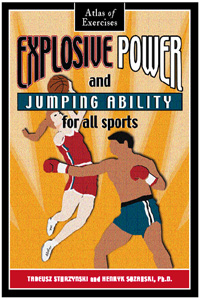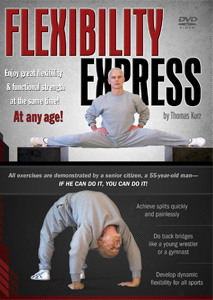by Thomas Kurz
People often ask me how to arrange their training programs, or simply in what order to do exercises for best results. As they ask these questions, they list the exercises they do. As soon as they tell me the bench press is a regular part of their training, even though they are not powerlifters, I know further conversation with them is a waste of time because they don’t think straight–their bench presses are proof of it. Here are reasons rational people (except powerlifters, for whom the bench press is a competitive lift) don’t do bench presses:
The bench press is done lying supine on a bench. The shoulder blades are stabilized passively, and thus the muscles positioning them for safe pushing and punching do not get strengthened enough to balance the strength of the chest muscles in the upright position when one can’t brace one’s back against the bench.
Here are things the bench press does:
- it does pack muscle mass on the upper chest while neglecting muscles of the upper back, thus creating a muscular imbalance that usually causes shoulder troubles;
- it does develop the cleavage desired by male bodybuilders, which may seem (but only seem) strange considering the function of the cleavage as explained by Desmond Morris in The Naked Ape;
- it does limit shoulder flexibility, which is why obsessive bench pressers have difficulty with overhead lifts, back bridges, and handstands;
- it does cause a hunched back, with arms carried in an internally rotated position unless balanced by remedial exercises, and lots of them;
- it does develop sport-specific strength for only one event of only one sport: powerlifting.*
* Until 1972, when the standing (overhead) press was still an Olympic weightlifting event, weightlifters did the bench press as an assistance exercise because they could lean backward while executing a standing press and thus involve chest muscles in the movement. See the standing press by superheavyweight Olympic lifter Vasiliy Alekseyev:
Standing (overhead) press
Such form is very dangerous for the lifter’s back, so the lift was removed from competition.
Here are things the bench press does not do:
- it doesn’t expand the rib cage as pullovers or other similar exercises do;
- it doesn’t build big delts (especially the middle deltoid, which gives that wide-shoulder look), needed for overhead lifts;
- it doesn’t contract the pectoralis major from its full stretch, so it works the muscle through only part of its ROM (examples of exercises that do work the major pec from its full stretch are pullovers and mace swings);
- it doesn’t strengthen muscles of the upper back and the rotator cuff (when muscles of the upper back and rotator cuff are too weak in relation to those of the chest and anterior shoulders, the results are poor posture and rotator cuff injuries);
- it doesn’t help with correctly performed overhead lifts;
- it doesn’t build as much functional or “fighting” strength as overhead lifts, push-ups, and implement swings do.**
**The bench press strengthens mostly the pectorals, triceps, and anterior deltoid. The main punching muscle is serratus anterior, which is best strengthened by push-ups and overhead lifts. When punching, the major pectorals are mere stabilizers, so people whose pectoralis major is completely torn off the arm bone can still punch as long as their serratus anterior and rotator cuff muscles are healthy. Strong pectoral muscles are needed for grappling moves, such as clinching and bear hugs, and so wrestlers do a variety of push-ups and swings with maces, clubs, and sledgehammers (boxers do sledgehammer swings too). The advantages of swings over bench presses are balanced strengthening of all muscles of the shoulder, working these muscles through their full ROM, and exercising while standing–which is how one’s strength is used in most activities.
Here are examples of such swings:
Clubs and mace–single handed
Mace–double handed
Typical boxing sledgehammer exercises
Rational resistance training (strength training) is covered in-depth in Stadion books Science of Sports Training and Explosive Power and Jumping Ability for All Sports, and in the video Flexibility Express.
If you have any questions on training you can post them at Stadion’s Sports and Martial Arts Training Discussion Forum





Pingback: Bench Press: Its Purpose and Function | Tom Kurz's Weblog
Hi Tom, very interesting points you have brought to our attention. I have a question, in your excellent but complex book secrets of stretching, you say in order to obtain both flexibility and lower back and hamsting flexibilty one must perform weight exercises such as deadlifts, good mornings, squats, lunges, leg extensions and leg flexions, is there a recommended sequence in which to do these exercises and how much weight do you recommend a person uses whilsts executing these exercises?
Kind Regards,
George Alex Henderson.
P.S. I am extremely sorry, I also forgot to ask, are ther any other weightlifting exercises you can recommend for someone like me who does Shotokan Karate and wishes to achieve full front and side splits? Once again I apologize.
Kind Regards,
George Alex Henderson.
An article that complements this one:
5 Reasons to Stop Doing the Bench Press
http://iamawakeandalive.com/5-reasons-to-stop-doing-the-bench-press/